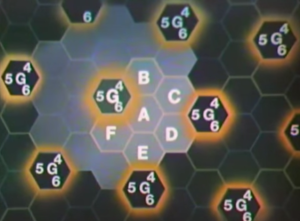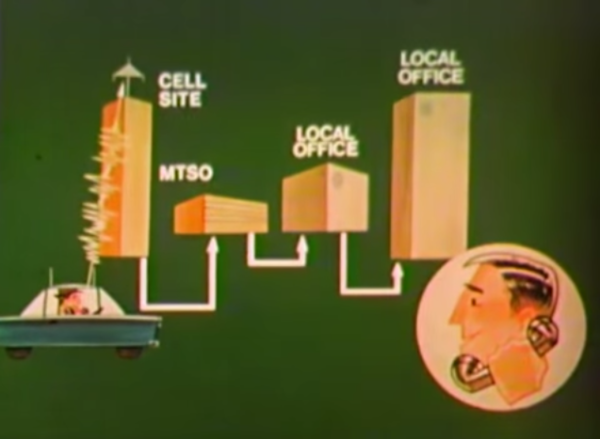This gem from the AT&T Archive does a good job of explaining the first-generation cellular technology that AT&T called Advanced Mobile Phone Service (AMPS). The hexagon-cellular network design was first conceived at Bell Labs in 1947. After a couple of decades spent pestering the FCC, AT&T was awarded the 850MHz band in the late 1970s. It was this decision coupled with the decades worth of Bell System technical improvements that gave cellular technology the bandwidth and power to really come into its own.
AT&T’s primary goals for the AMPS network were threefold: to provide more service to more people, to improve service quality, and to lower the cost to subscribers. Early mobile network design gave us the Mobile Service Area, or MSA. Each high-elevation transmitter could serve a 20-mile radius of subscribers, a range which constituted one MSA. In the mid-1940s, only 21 channels could be used in the 35MHz and 150MHz band allocations. The 450MHz band was introduced in 1952, provided another 12 channels.
 The FCC’s allocation opened a whopping 666 channels in the neighborhood of 850MHz. Bell Labs’ hexagonal innovation sub-divided the MSAs into cells, each with a radius of up to ten miles.
The FCC’s allocation opened a whopping 666 channels in the neighborhood of 850MHz. Bell Labs’ hexagonal innovation sub-divided the MSAs into cells, each with a radius of up to ten miles.
The film explains quite well that in this arrangement, each cell set of seven can utilize all 666 channels. Cells adjacent to each other in the set must use different channels, but any cell at least 100 miles away can use the same channels. Furthermore, cells can be subdivided or split. Duplicate frequencies are dealt with through the FM capture effect in which the weaker signal is suppressed.
Those Bell System technical improvements facilitated the electronic switching that takes place between the Mobile Telephone Switching Office (MTSO) and the POTS landline network. They also realized the automatic control features required of the AMPS project, such as vehicle location and automatic channel assignment. The film concludes its lecture with step-by-step explanations of inbound and outbound call setup where a mobile device is concerned.
Continue reading “Retrotechtacular: Ma Bell’s Advanced Mobile Phone Service (AMPS)”












